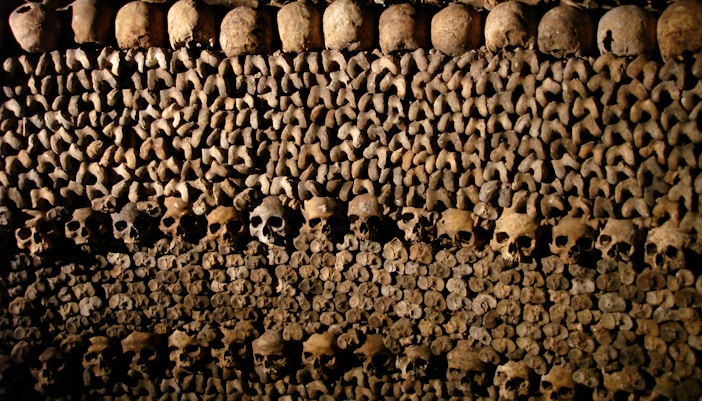- Disneyland® Paris Tickets
- Eiffel Tower Tickets
- Louvre Museum Tickets
- Versailles Tickets
- Notre-Dame Paris Tickets
- Orsay Museum Tickets
- Paris Pantheon Tickets
- Arc De Triomphe Tickets
- Opera Garnier Paris Tickets
- Centre Pompidou Tickets
- Big Bus Paris Hop-on Hop-off Tours
- Parc Astérix Paris Tickets
- Sainte Chapelle Tickets
- Les Invalides Tickets
- Eurail Passes
- Musee de l'Orangerie Tickets
History of the Paris Catacombs




Book Paris Catacombs Tickets
Frequently Asked Questions About the Paris Catacombs History
The Paris Catacombs gained significance in the late 18th and early 19th centuries as a solution to cemetery overcrowding and is today home to the remains of over 6 million people. They feature meticulously arranged bones and skulls, making it a heritage and tourist site.
While the underground tunnels date as far back as 1 AD, it wasn't until 1785 that the remains of Parisians began to be transferred to the Catacombs. By 1809, the Catacombs became the final resting place for remains from over 150 cemeteries.
Mined by the early Romans for limestone, the underground tunnels were created during Paris' urban expansion. By the 17th century, Parisian cemeteries were overwhelmed, prompting authorities to relocate human remains into the strengthened quarries beneath the city. Between the late 18th to early 19th centuries, the tunnels were transformed into vast ossuaries housing the bones of millions, as seen today.
Originally Roman quarries, the underground tunnels under Paris expanded during the Middle Ages to meet the growing demand for construction materials. By the 17th century, human remains were relocated from overcrowded cemeteries into the disused quarries, housing millions of bones. During the Napoleonic era, the Catacombs were organised into artistic arrangements of bones and skulls. Today, they are a site for tourism and a reminder of Paris' intricate history.
Legends of secret societies and hidden chambers within the tunnels have persisted over time, adding to their mystique. Despite regulations prohibiting unauthorised access, the Paris Catacombs have been a magnet for illegal exploration by urban adventurers called 'cataphiles'. During World War II, the Paris Catacombs also served as a refuge for French Resistance fighters against Nazi occupation.
Yes, you can book guided tours to the Paris Catacombs and learn about its history in detail. You can also book tickets that allow you access to areas restricted to the general public and enhance your experience.



